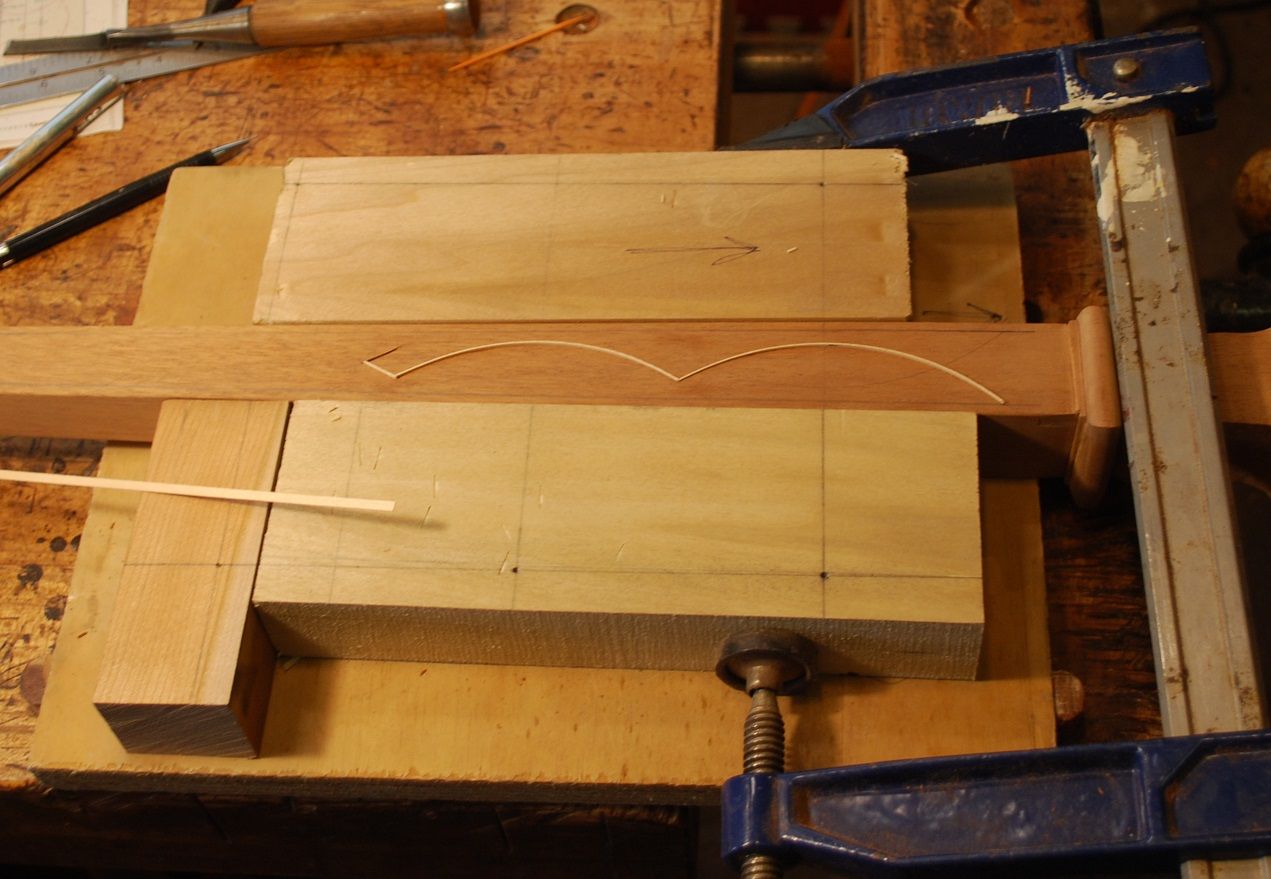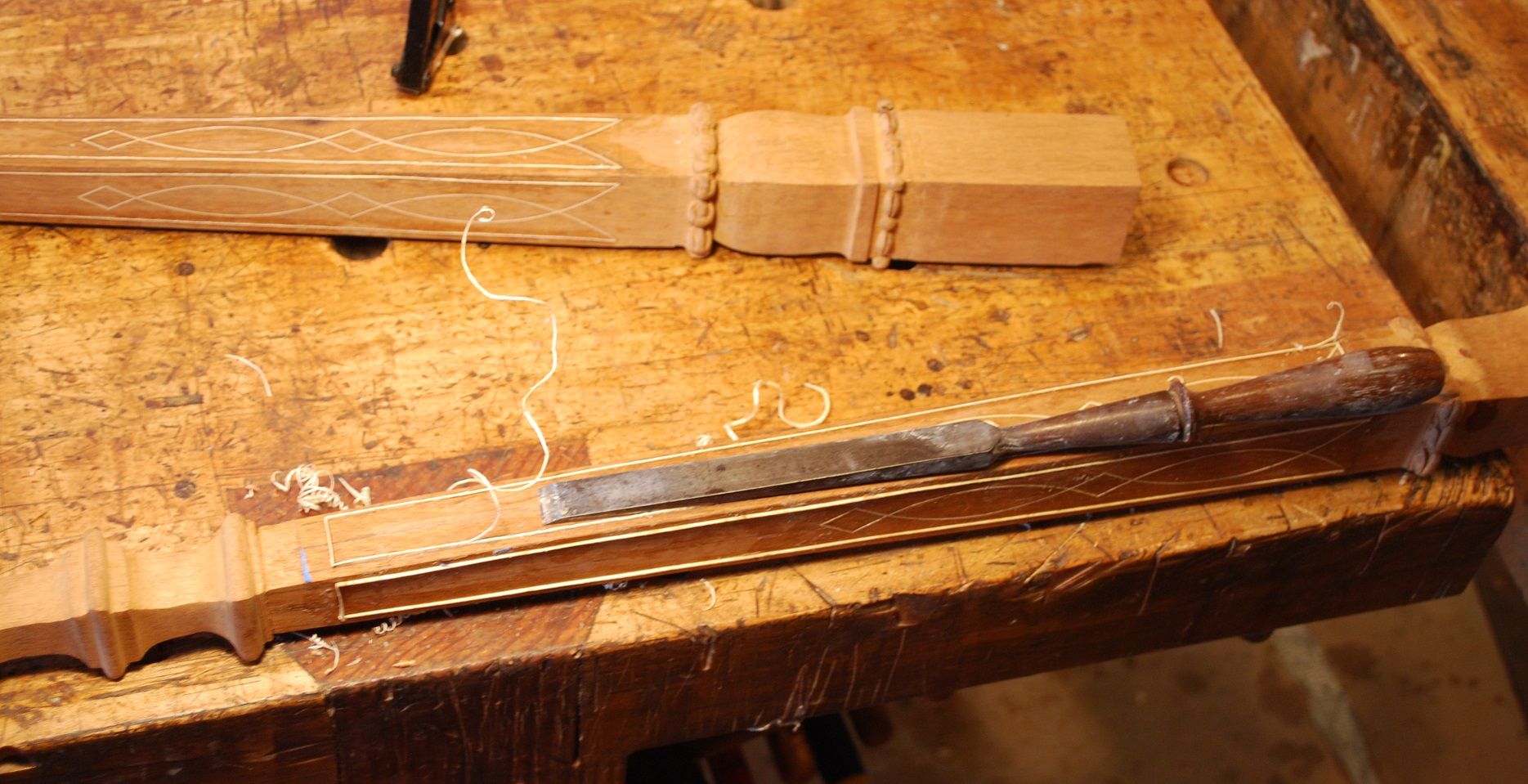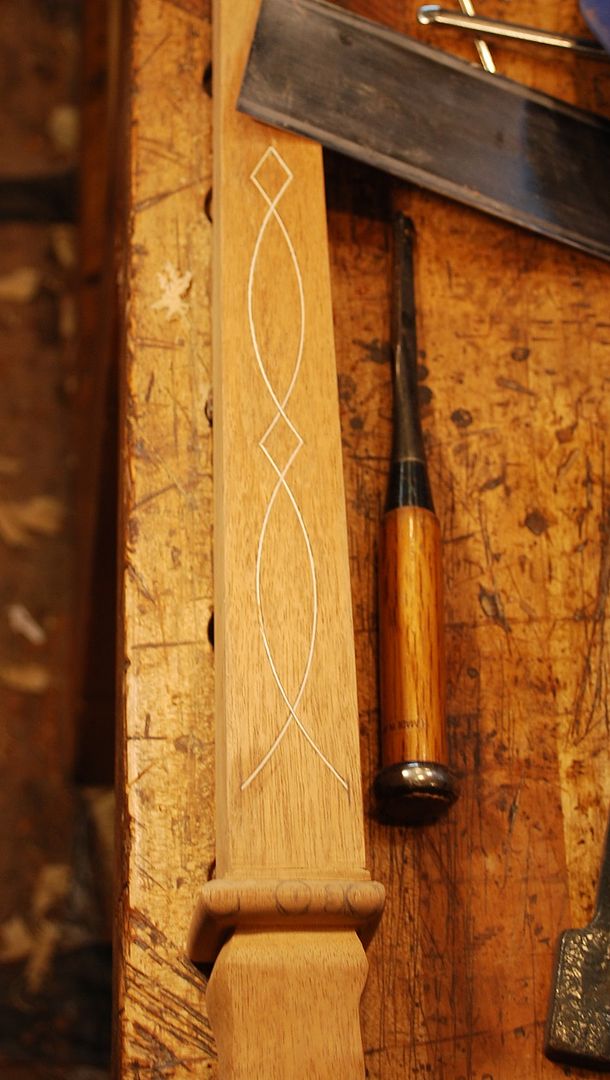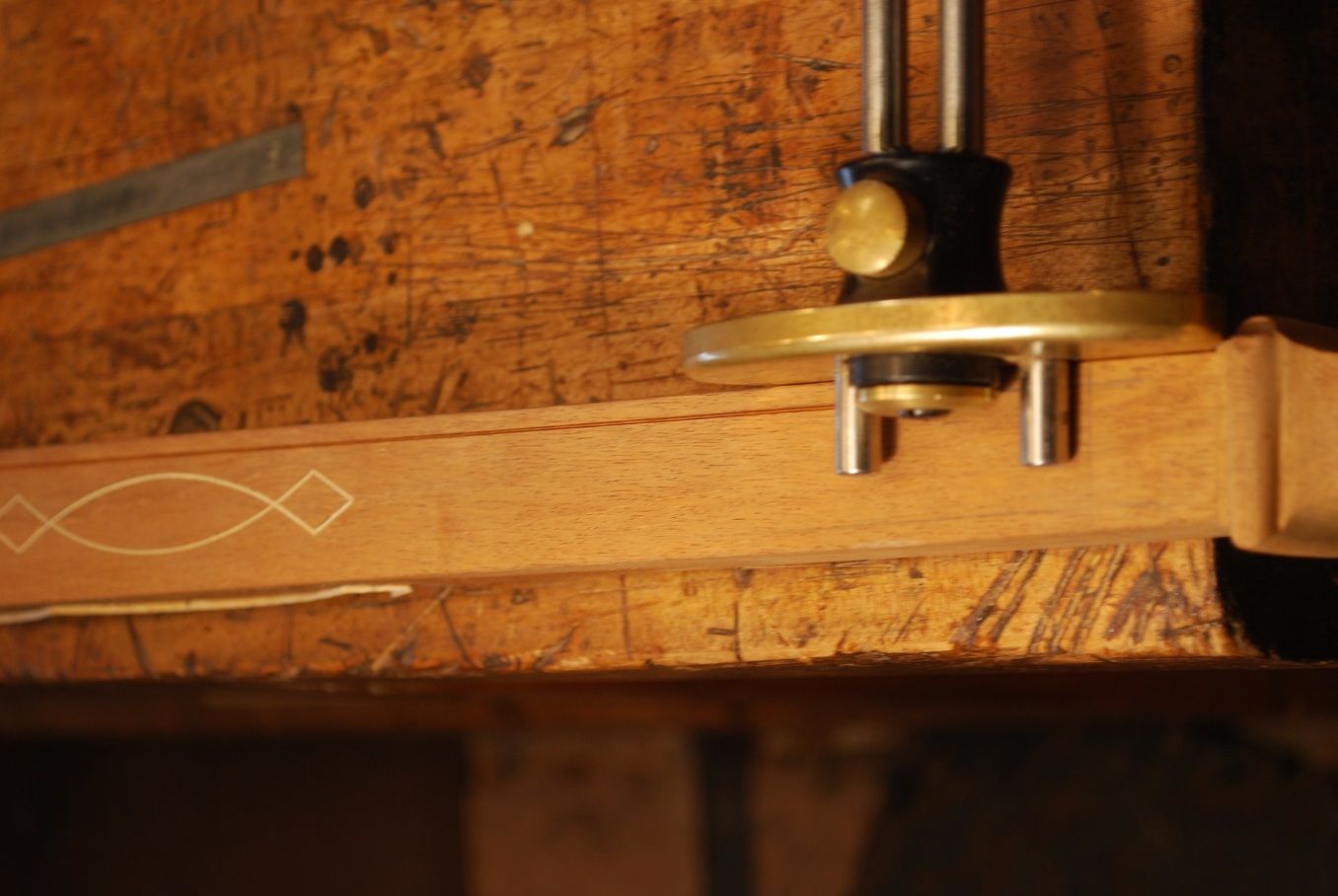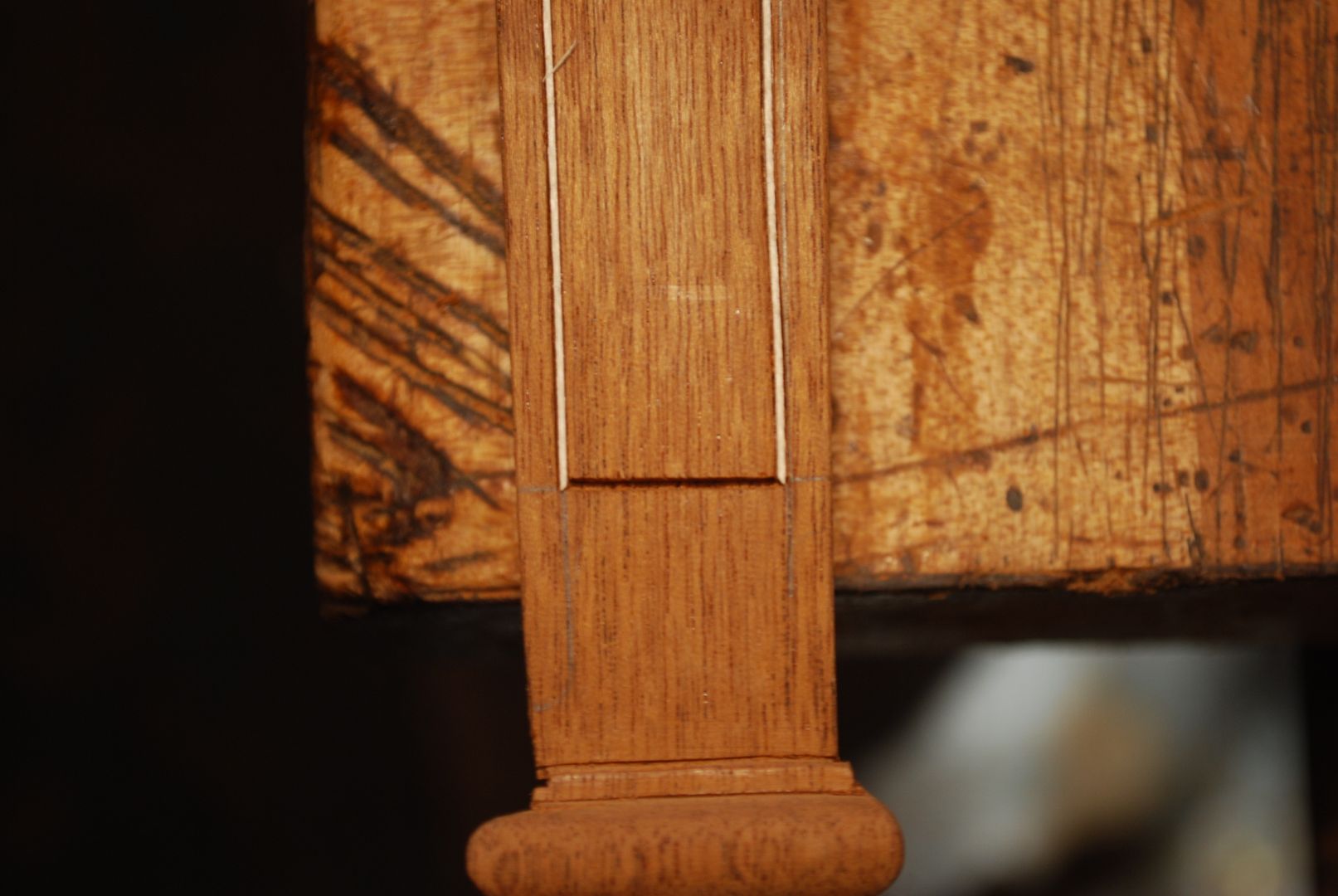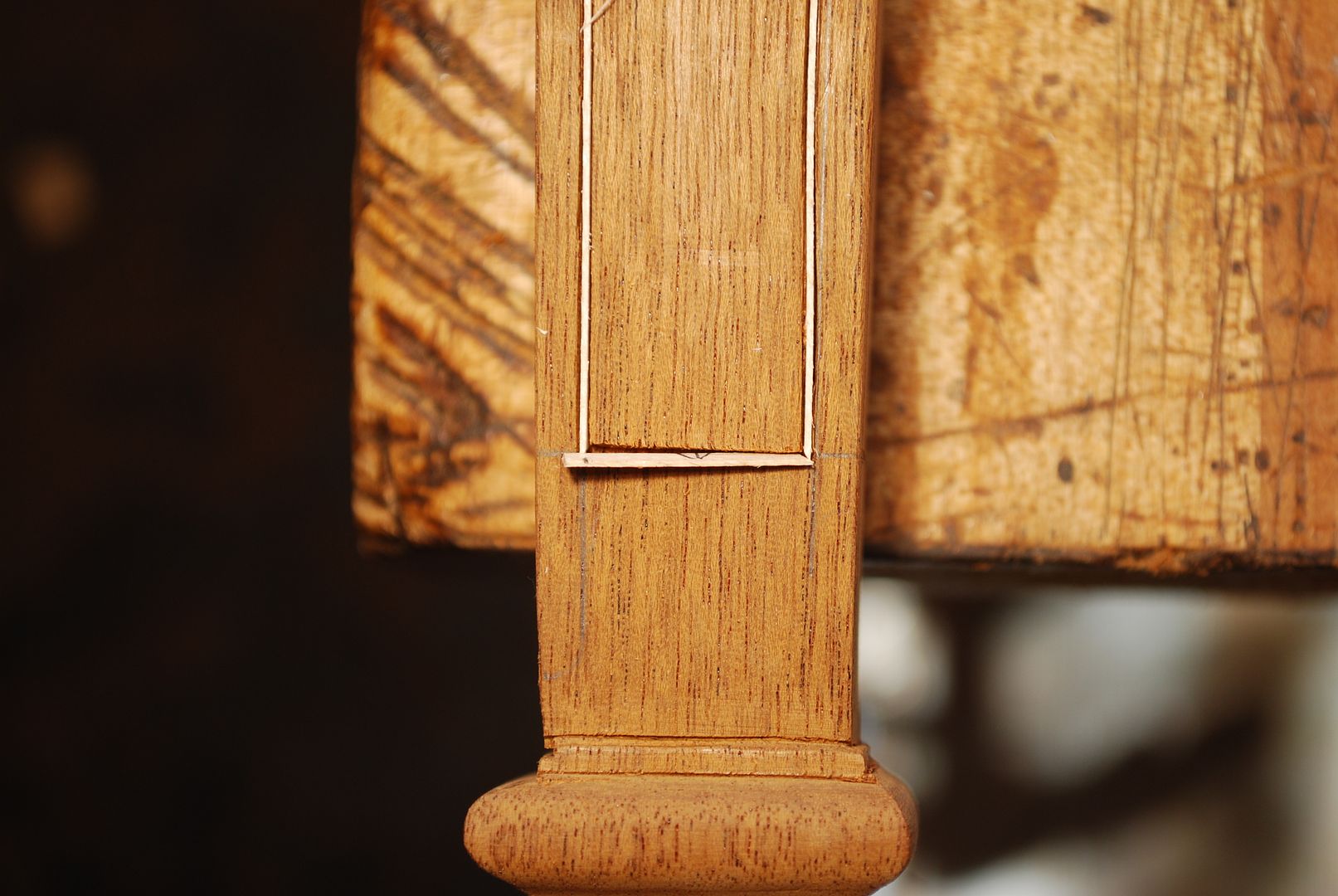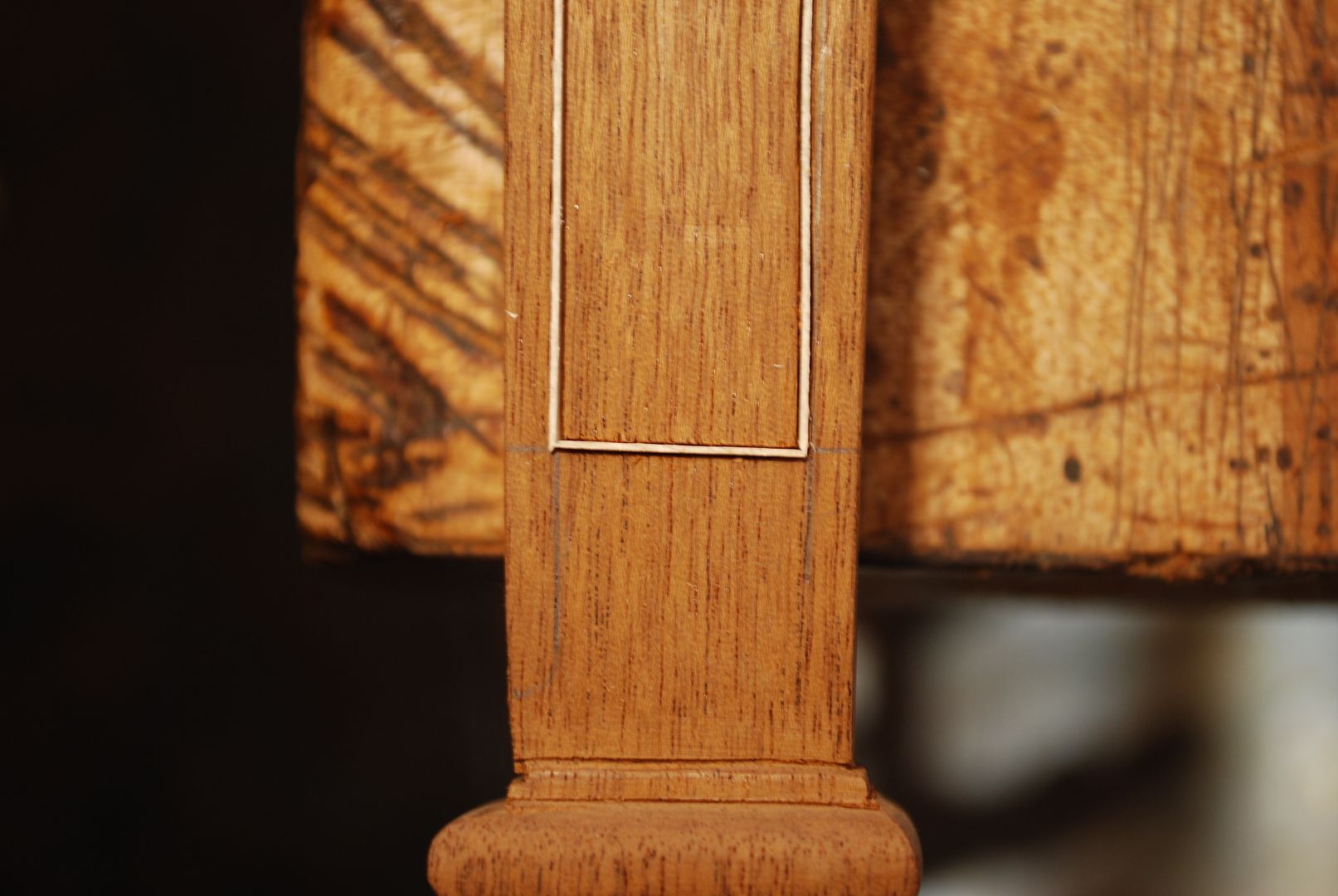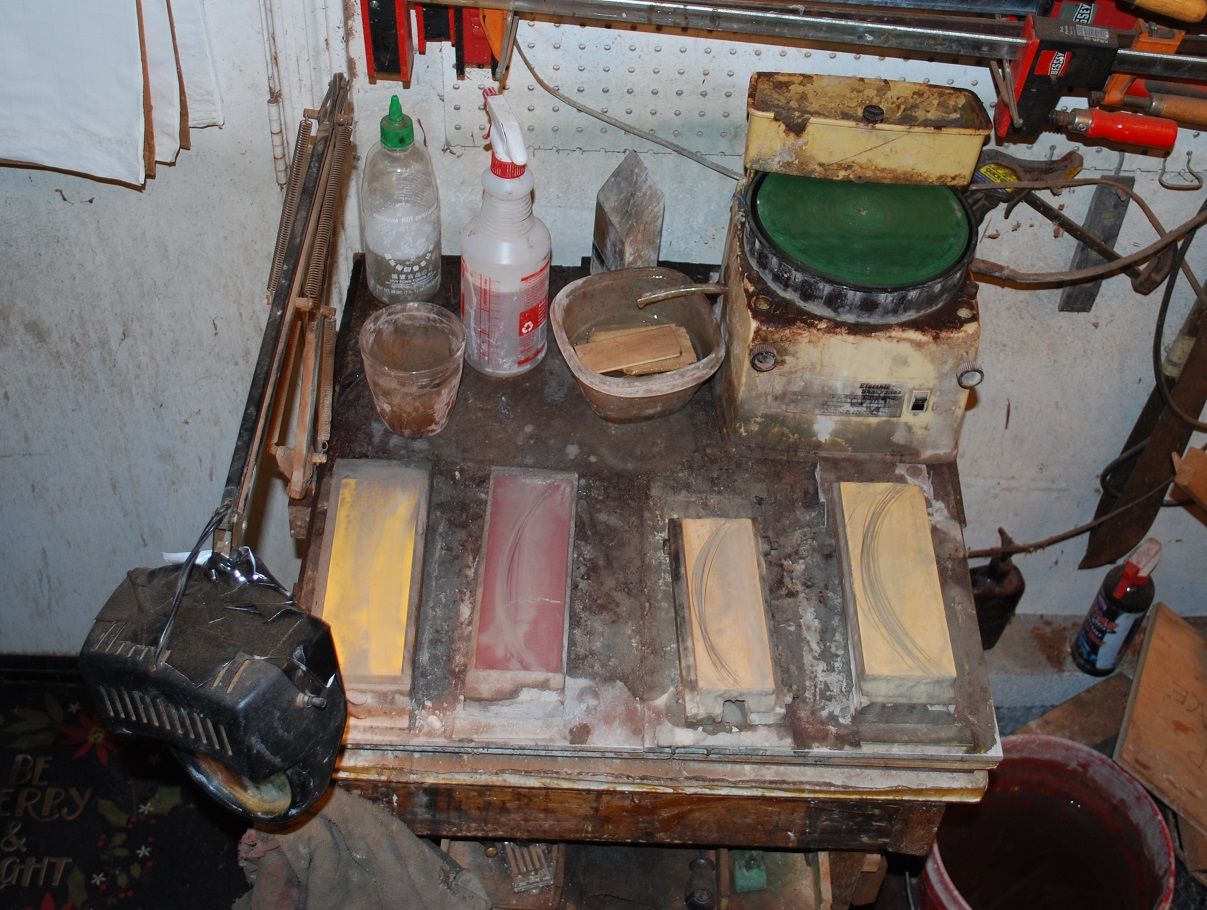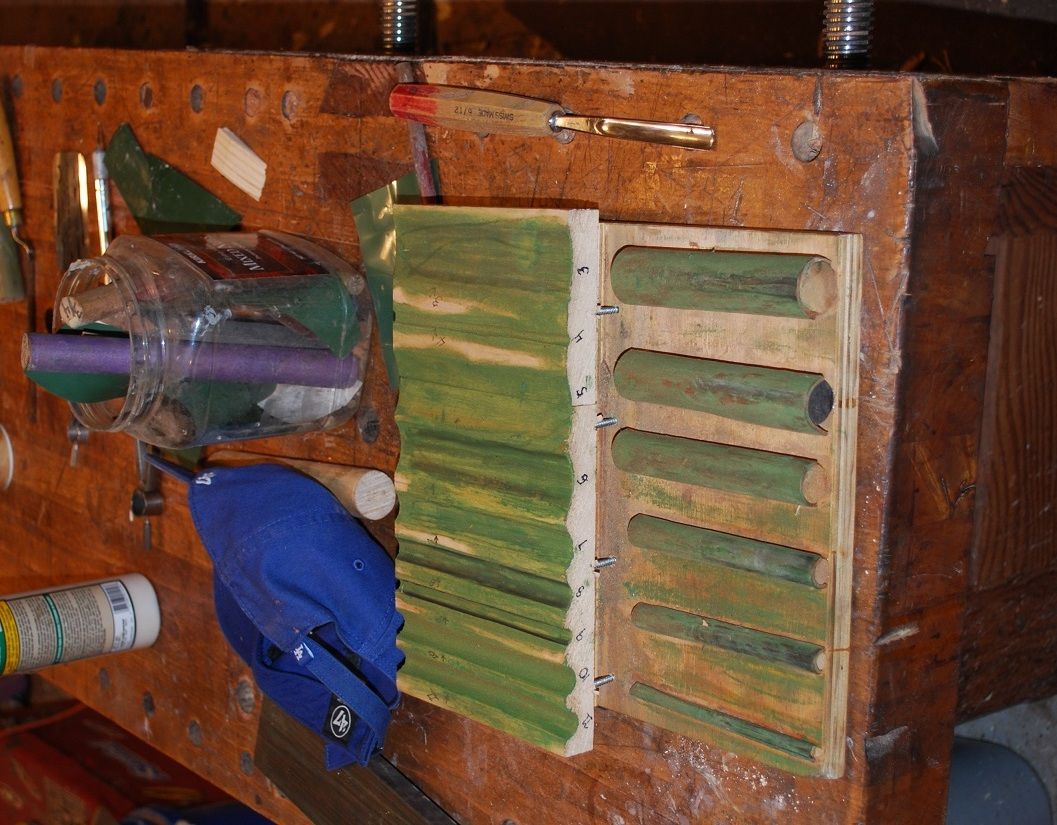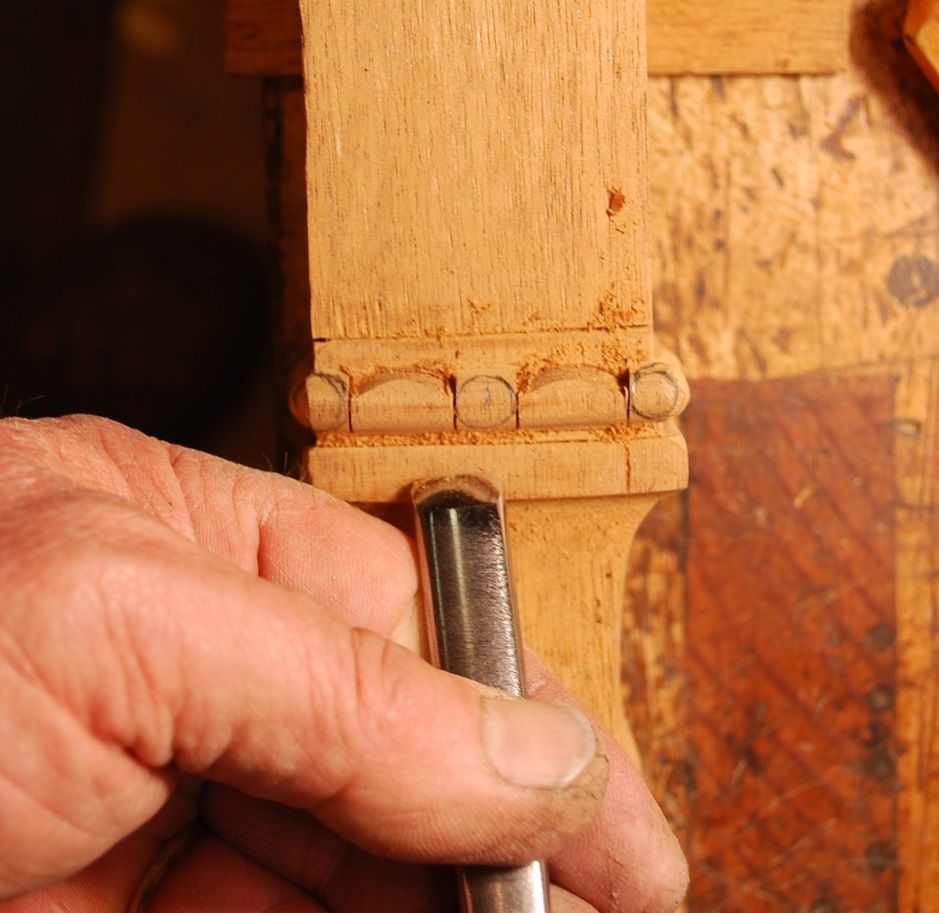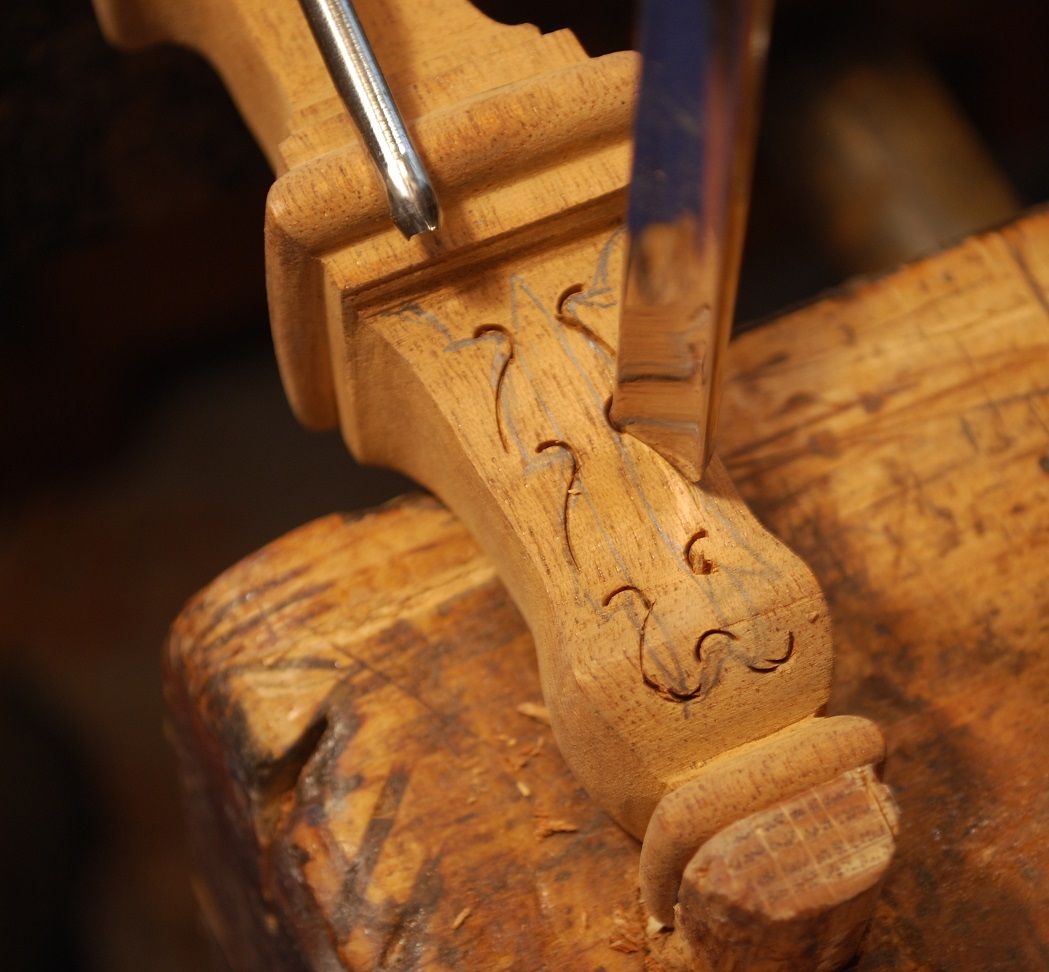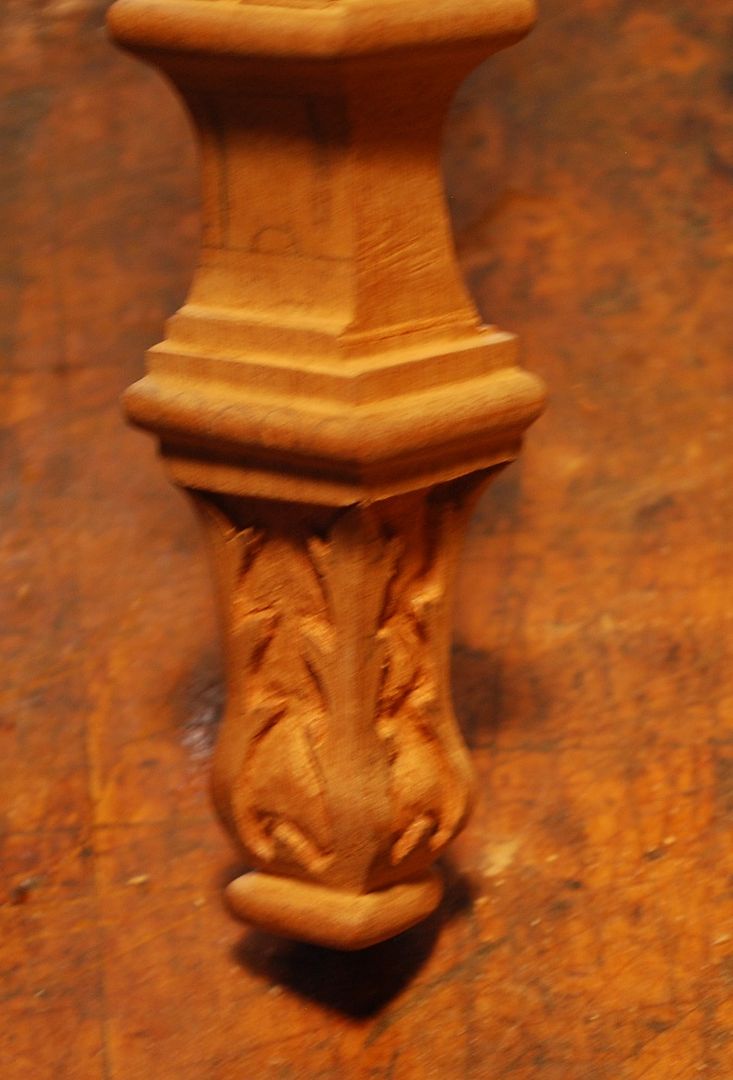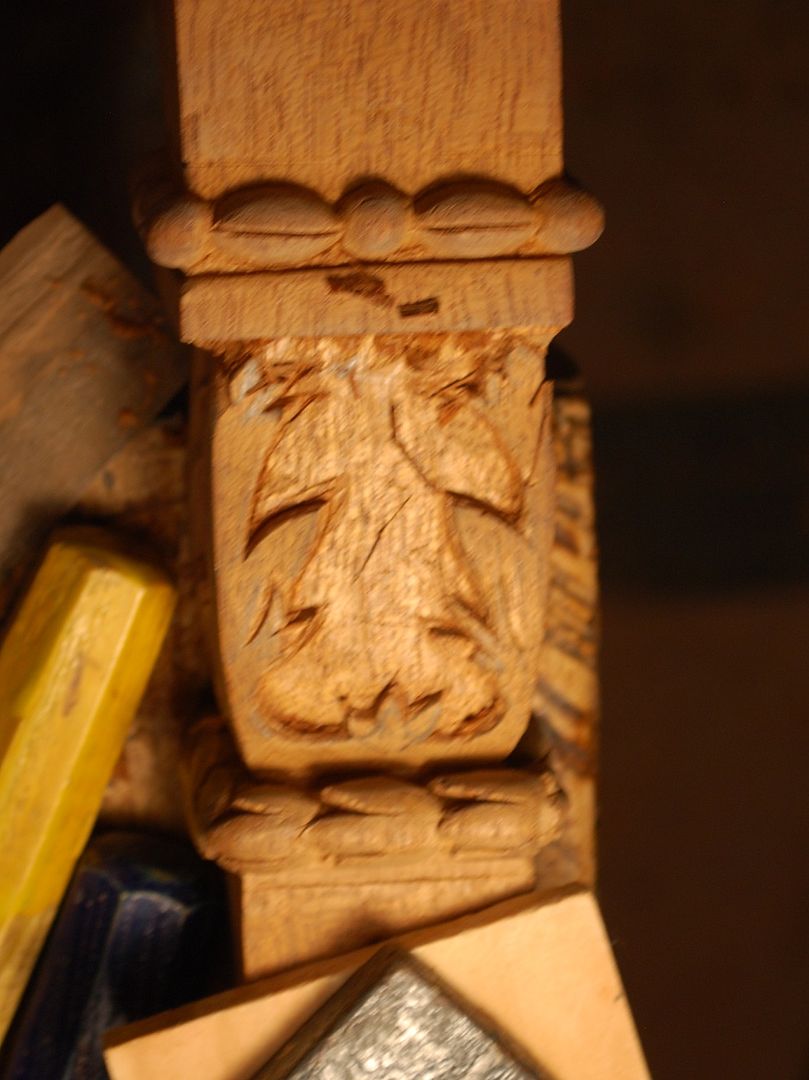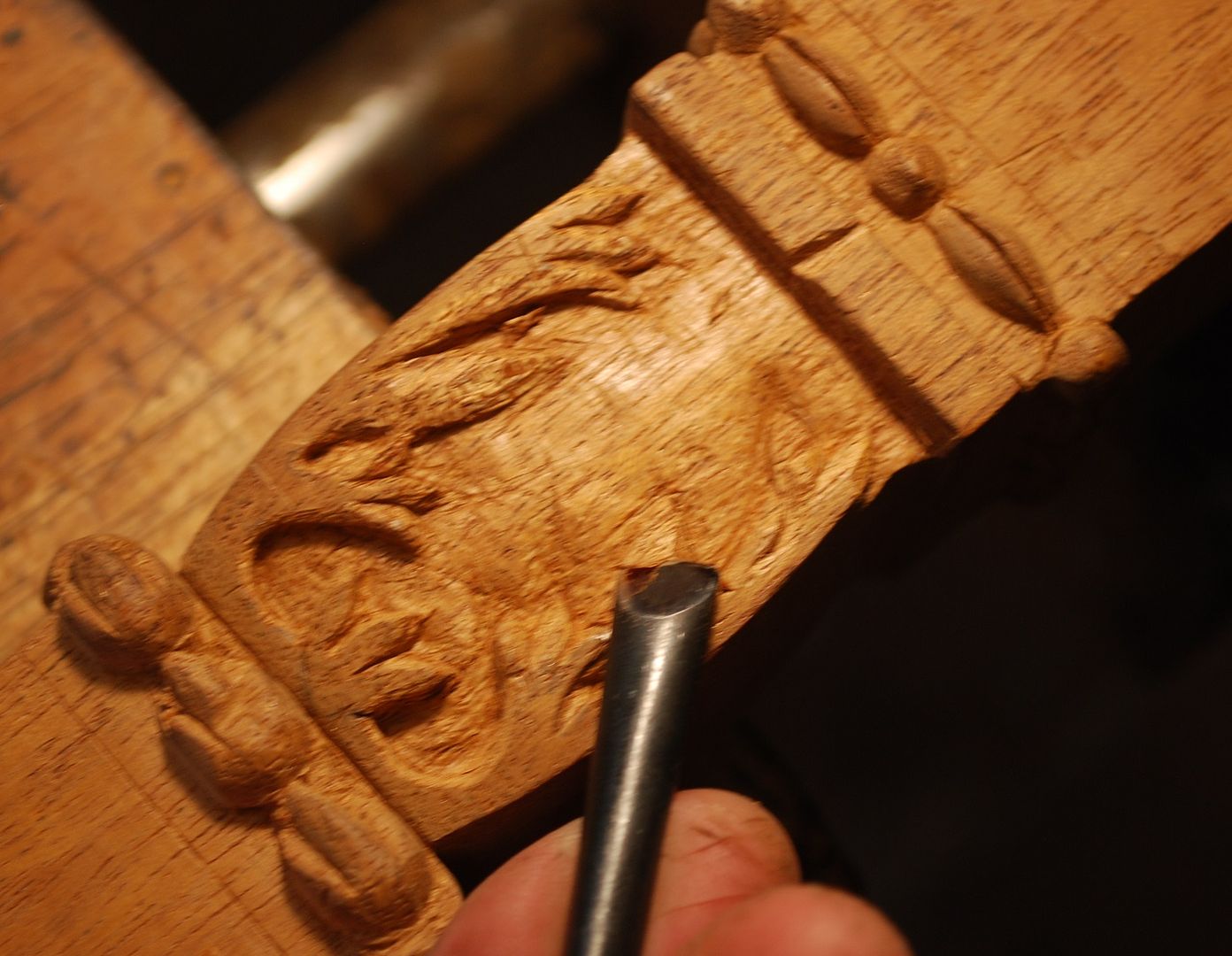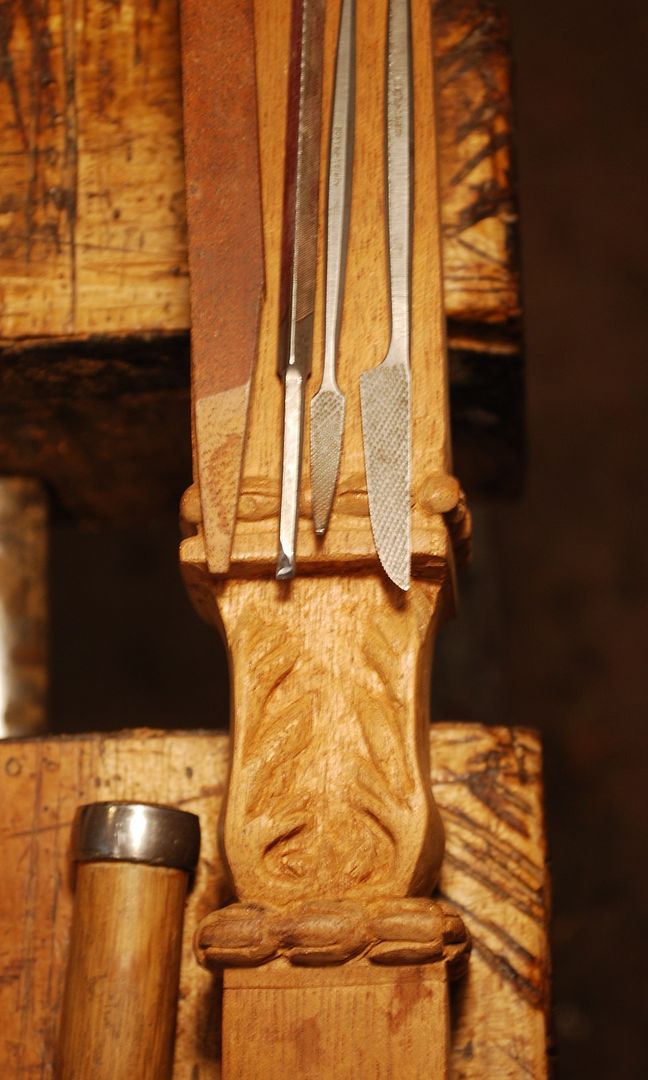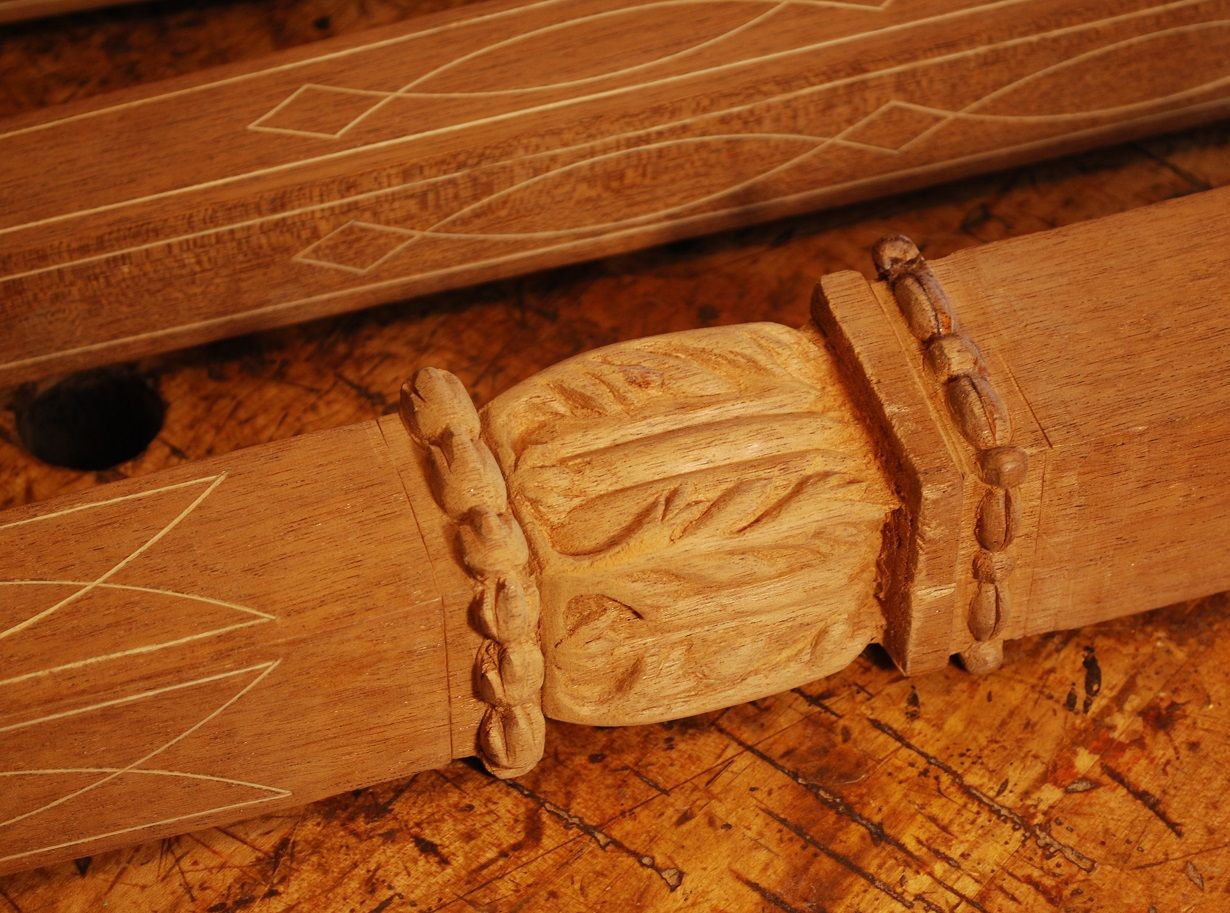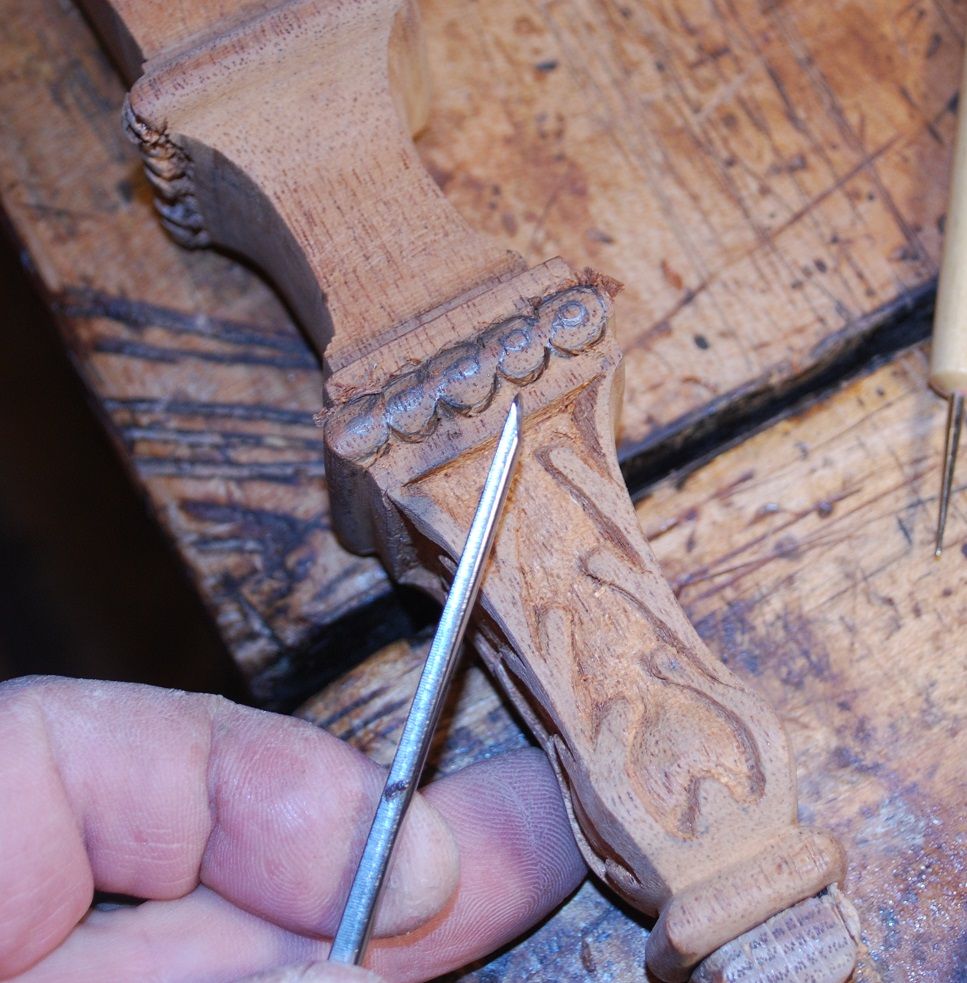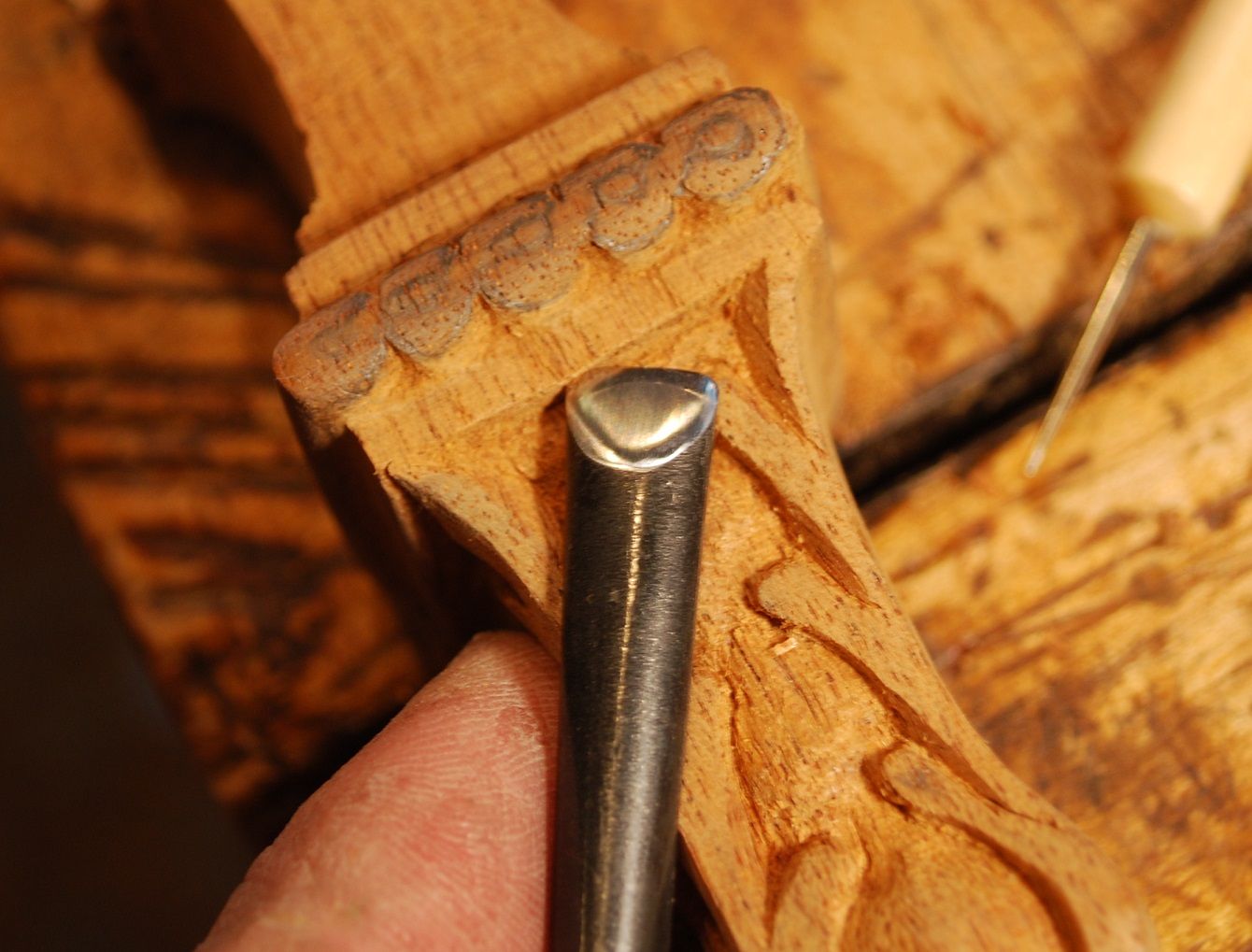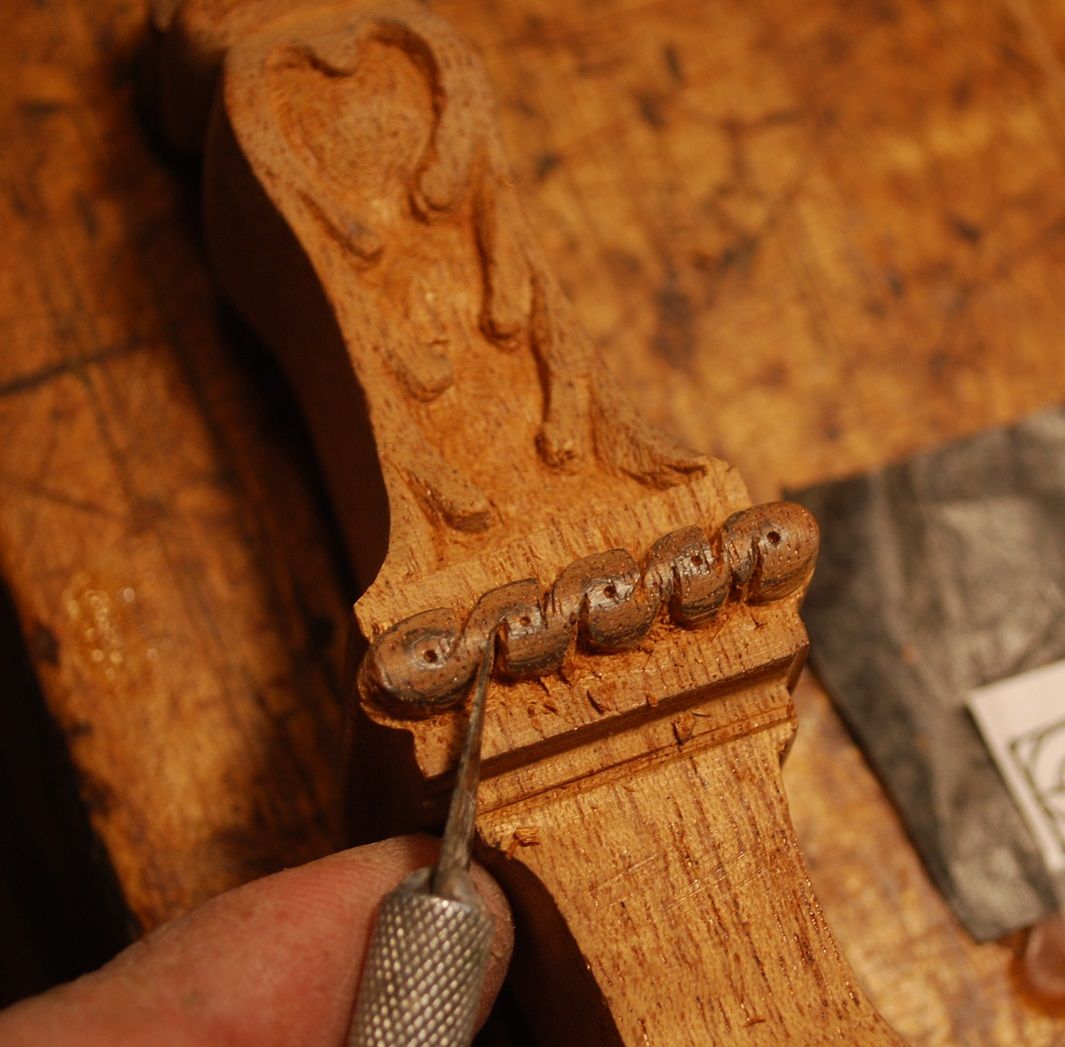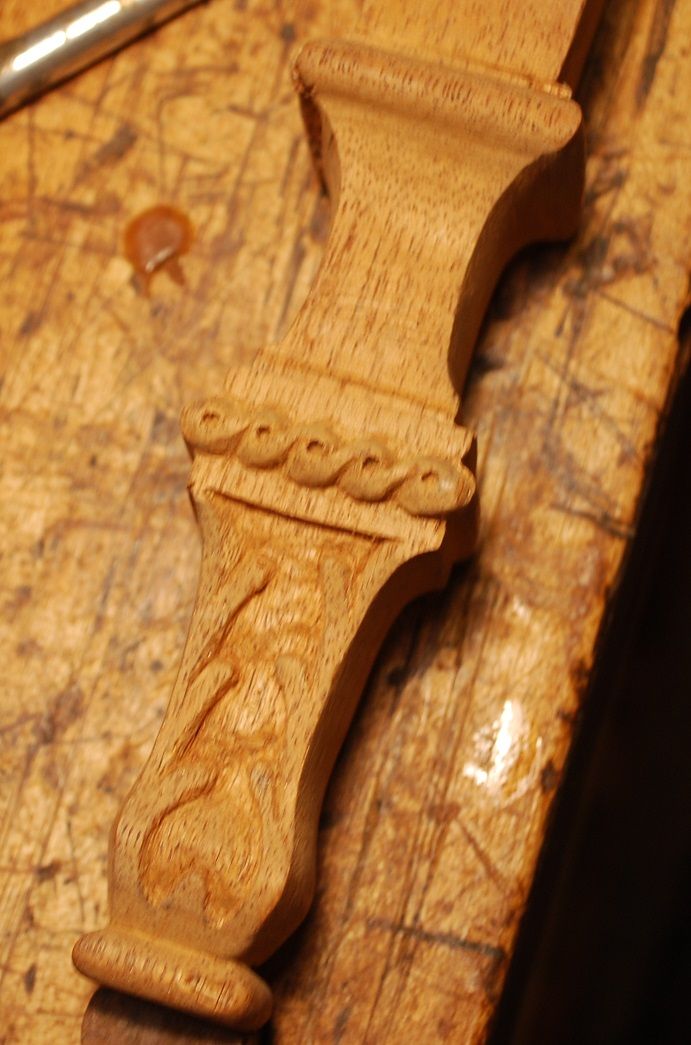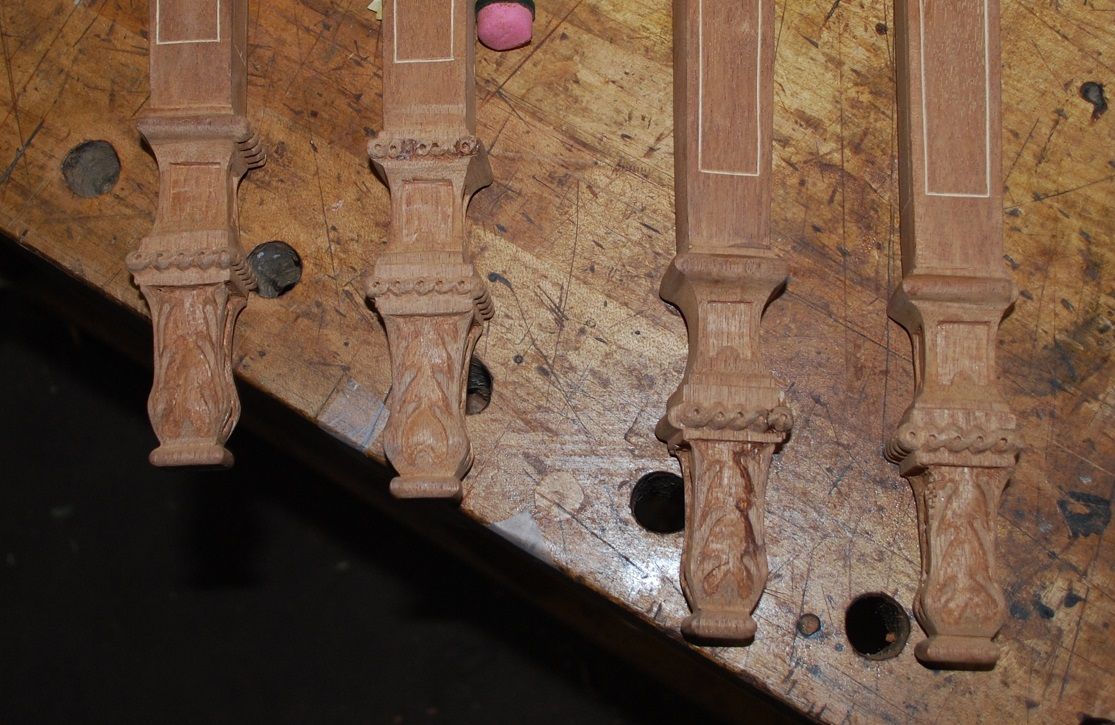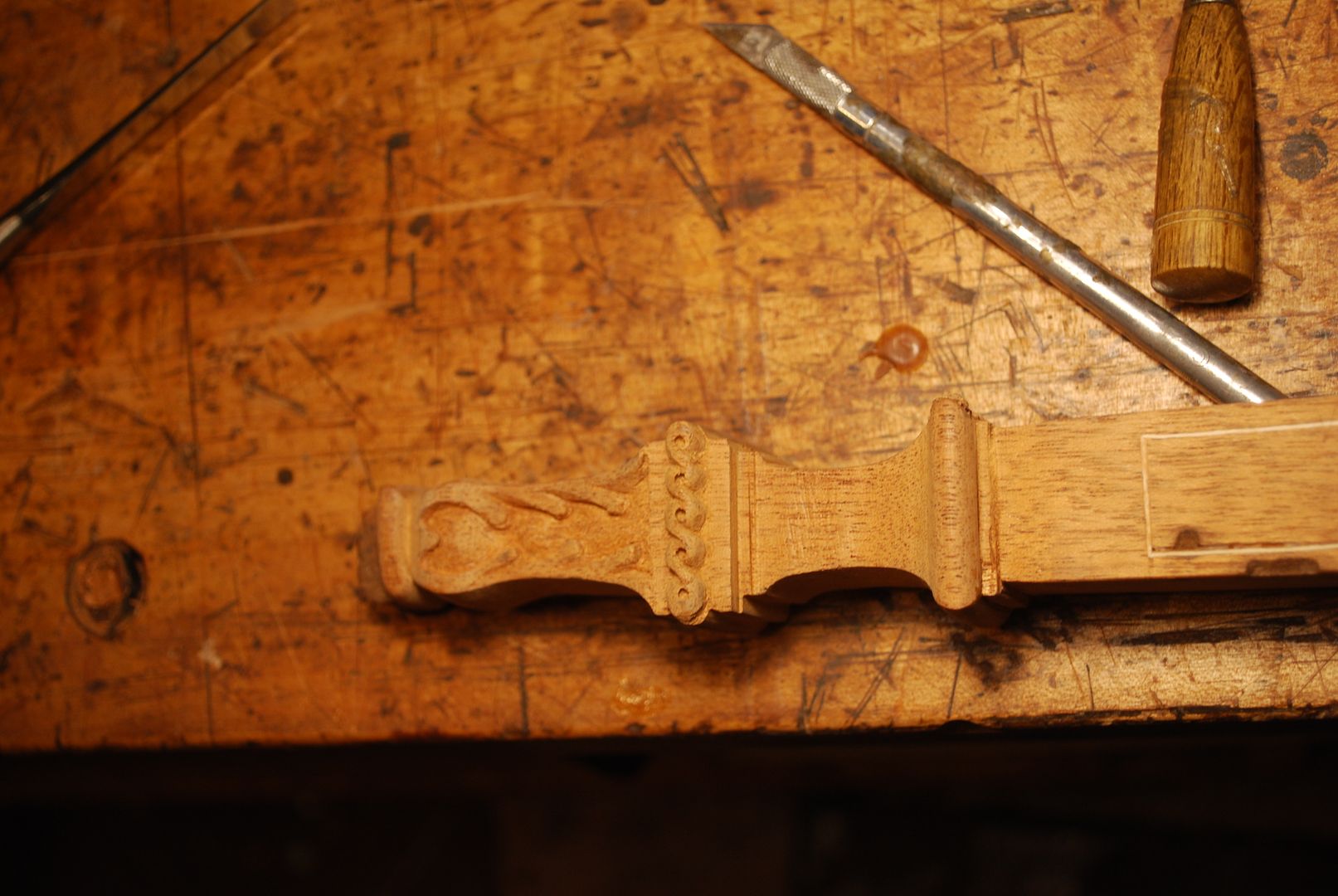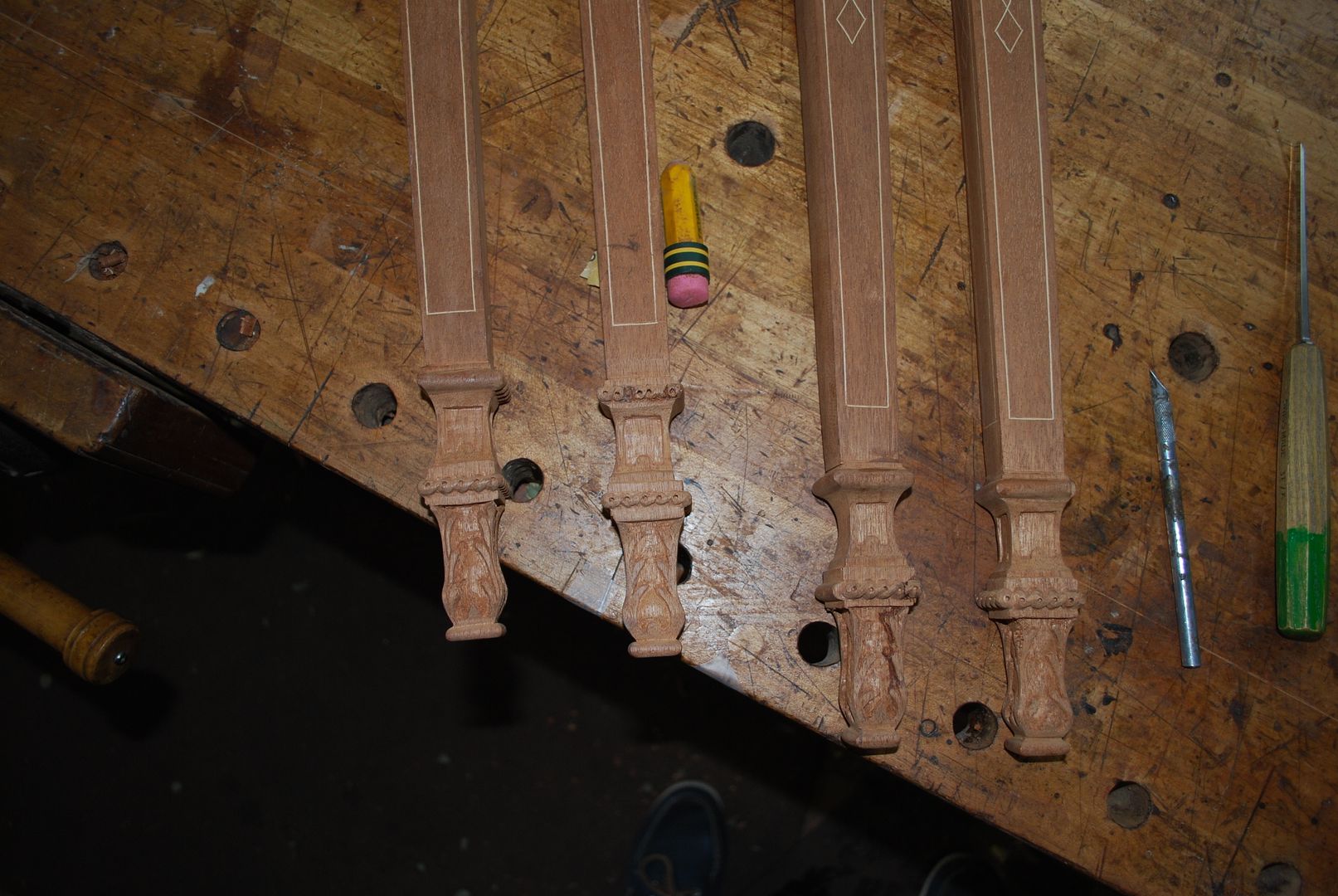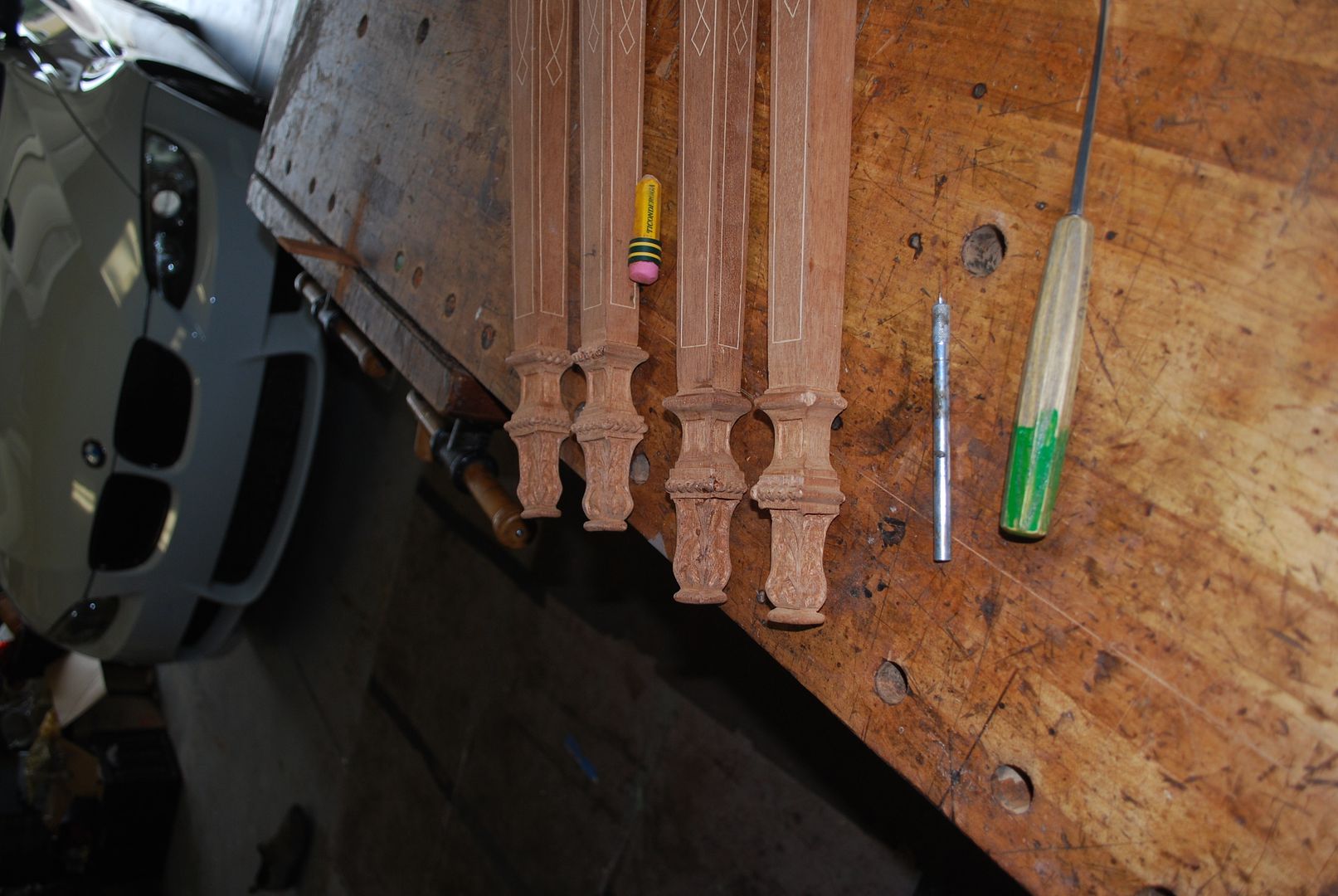This is part 2 of a folding, mahogany table build – roughly in the style of Sheraton, I plan to use my office as a work surface. The bulk of the work in this build is focused on the legs which when complete will include string inlay, 3 different types of carving and some marquetry, that is if my eyesight and patience holds out!
In part one I detailed most of the shaping of the legs – here’s a couple pics:
I attempted string inlay based on recent article in Fine Woodworking. There is a fair bit of geometry involved in getting the arcs/intersections to line up that I couldn’t begin to describe. Steve Latta’s Article does an excellent job providing the details. String inlay will cover 2 sides of each of legs – total of 8 show surfaces. Jig Latta describes is essential in aligning all the work surfaces consistently with pivot points for the arcs. I don’t have much confidence in my geometry so I used a compass to layout where I hoped the inlay would go.
Here’s some pictures using the LV string inlay tool to cut the arcs. A super narrow Japanese saw file is helpful for keeping the cutting edges sharp. Try not to sharpen the outside of the cutters as that will decrease the width of the groove. I just sneak up close to the endpoints and finish the arcs with an X-Acto knife.
Here are the LV inlay tools I use that for me are pretty much essential. The black handle tools are a chisel and scribe sized to the same width as the cutter – you definitely need these.




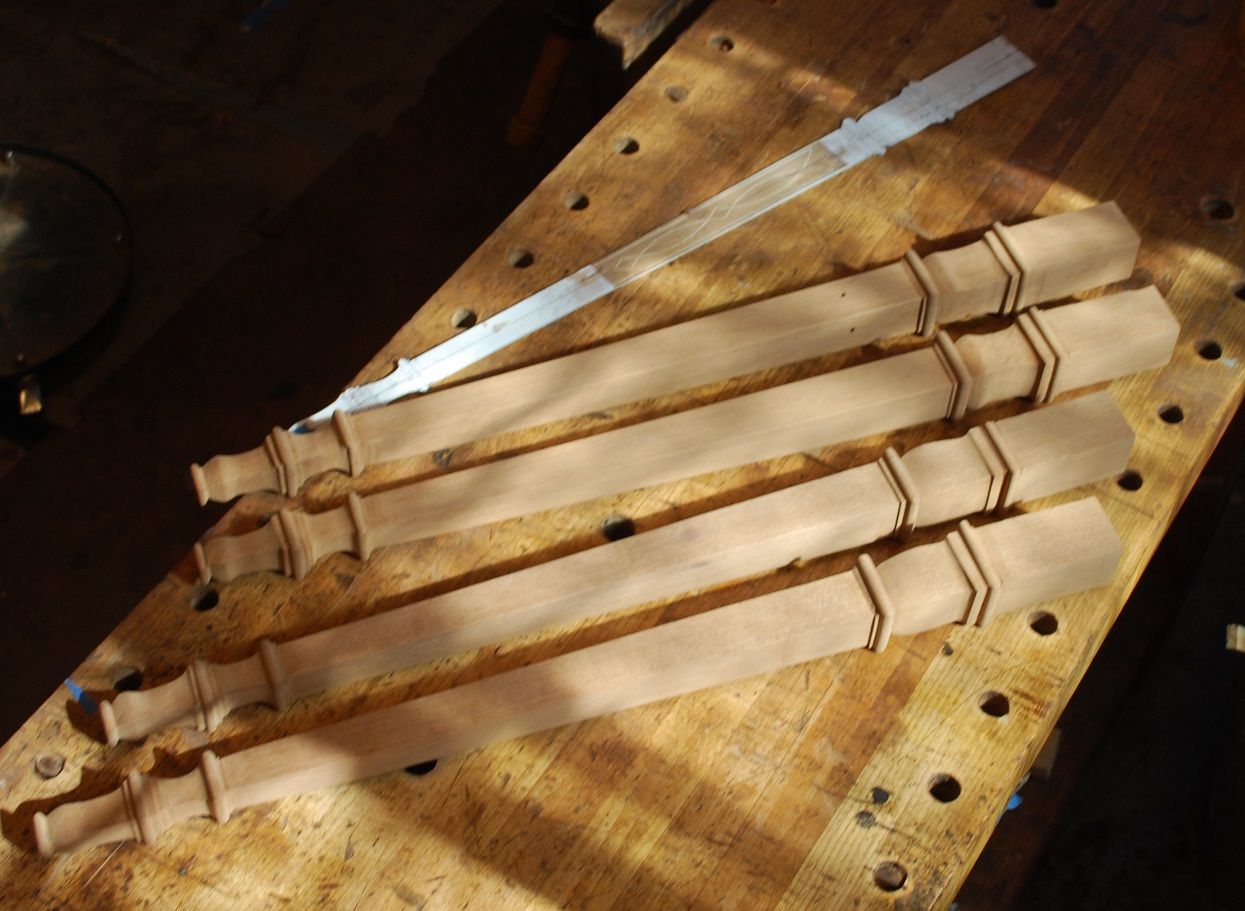
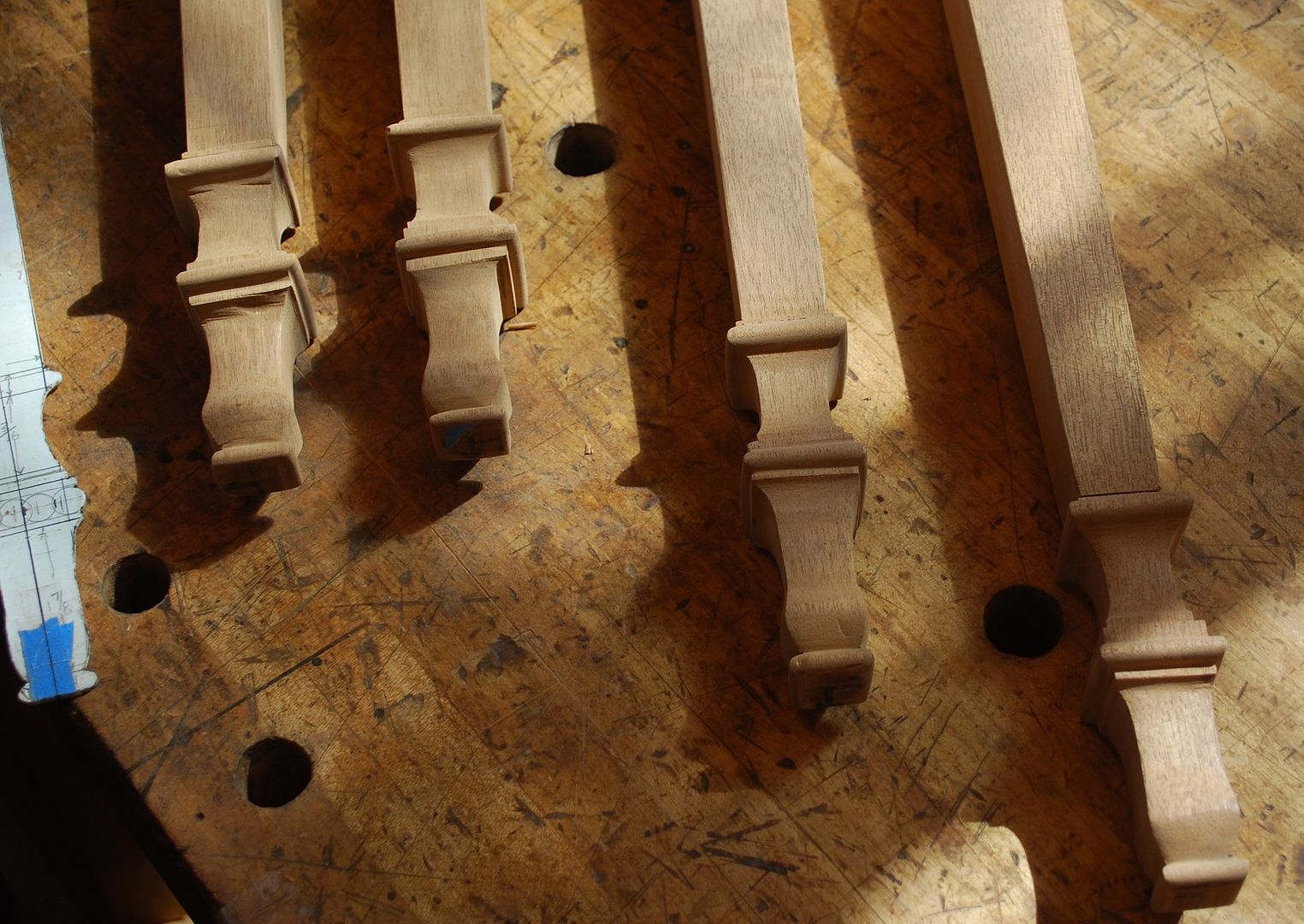

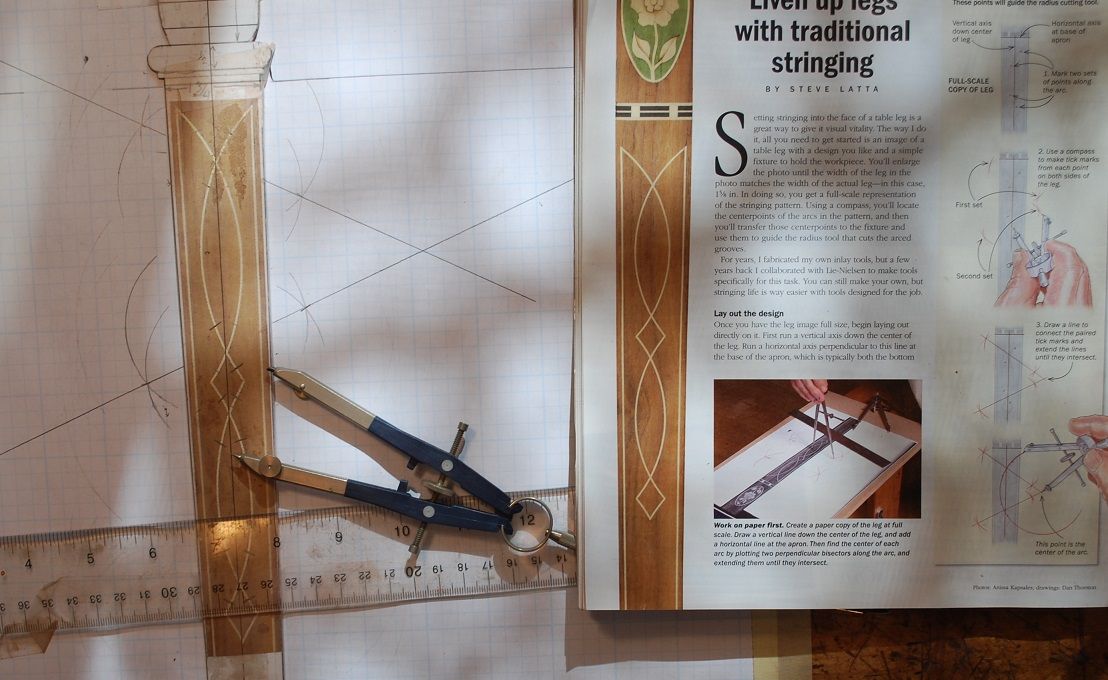
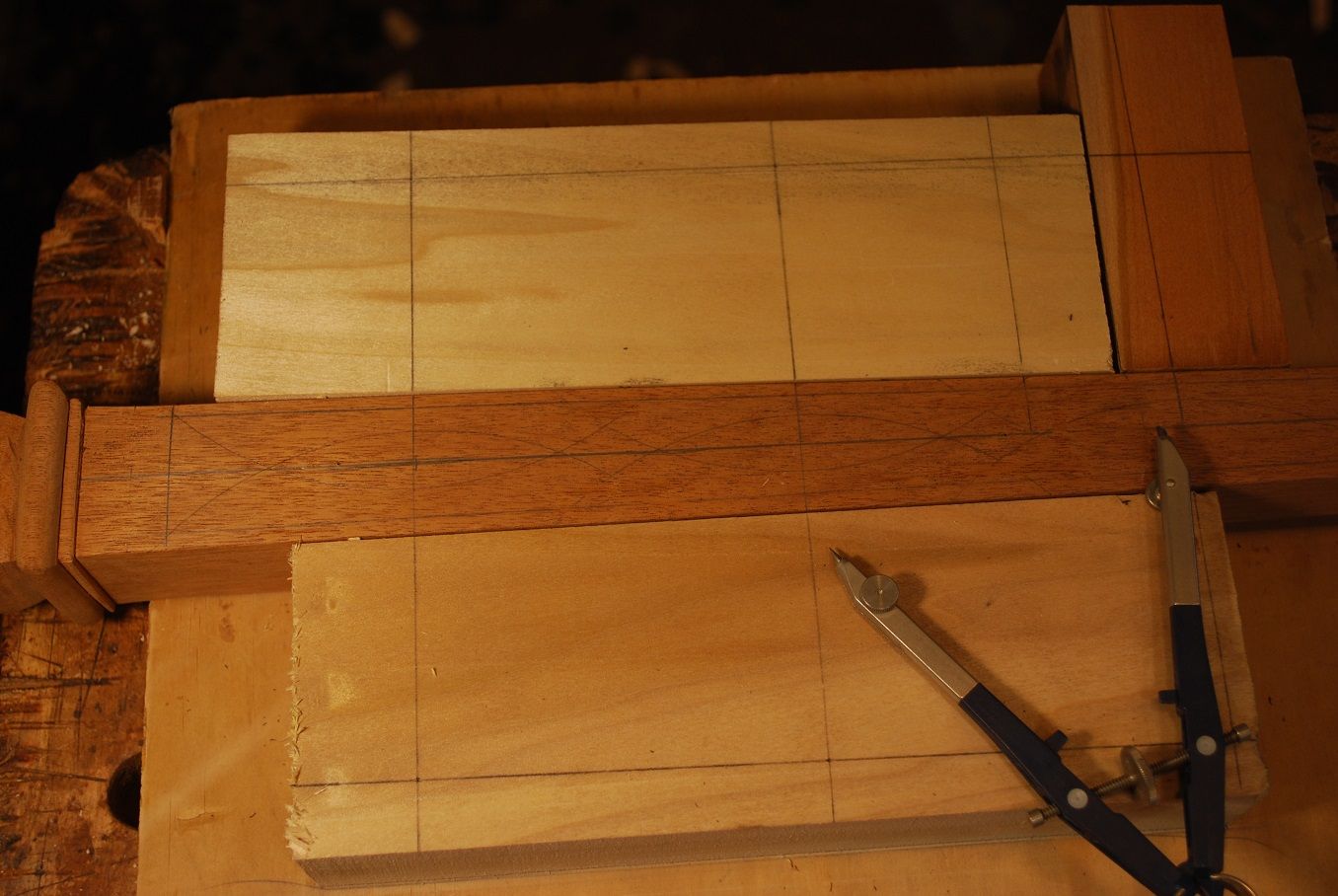
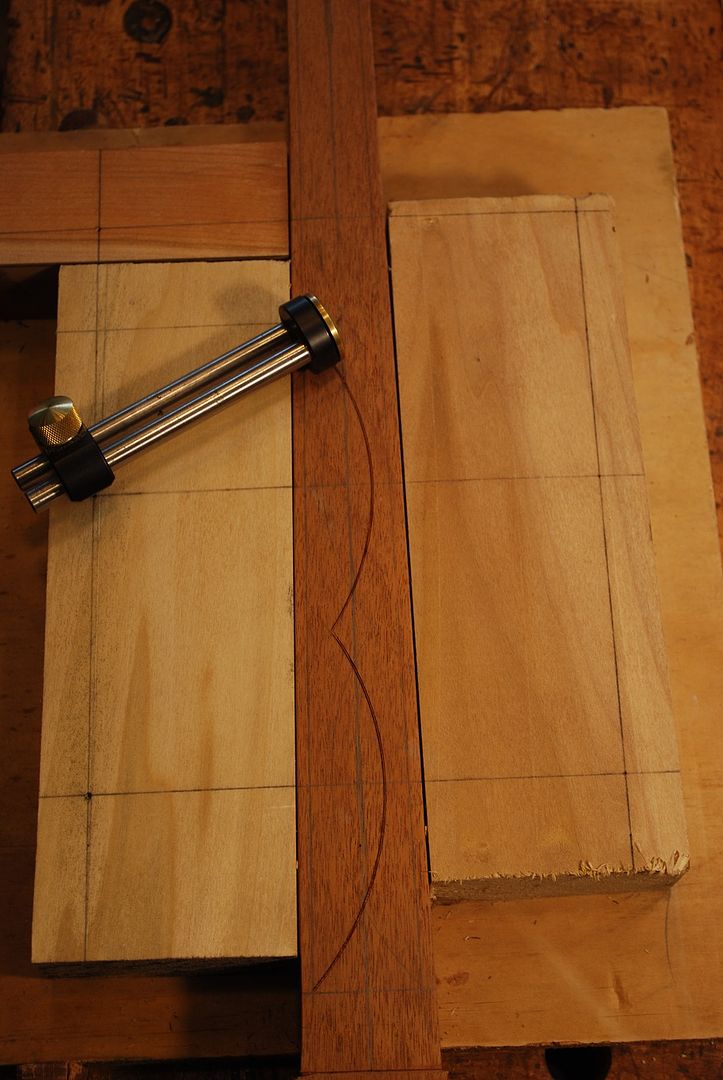

 Reply With Quote
Reply With Quote